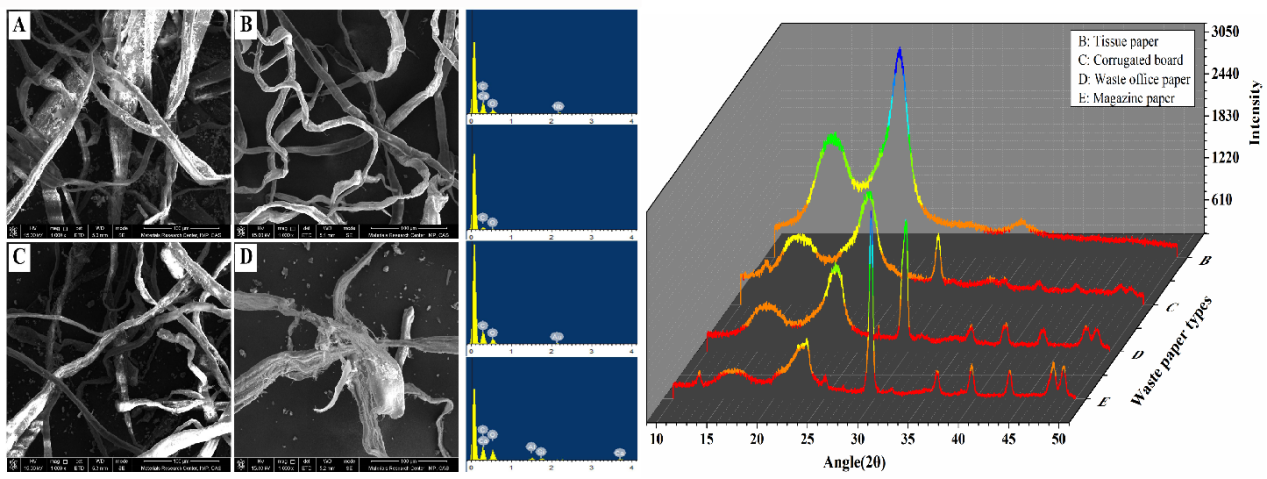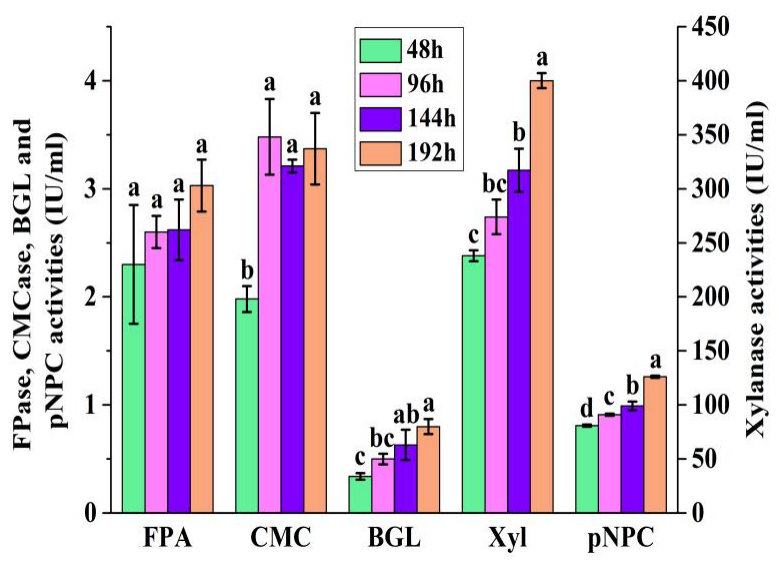
Researchers at the Institute of Modern Physics (IMP) of the Chinese Academy of Sciences (CAS) have recently found that waste paper could be efficiently utilized for enzyme production by Trichoderma longiflorum. The study was published in Journal of Cleaner Production.
Cellulase, accounting for the world's third-largest share of industrial enzyme market except for amylase and protease, is widely used in biofuel, food, papermaking, textile washing, medicine, animal feed and agricultural waste treatment. However, the high production cost of enzyme remains a major challenge for its further industrial applications.
Waste paper, one of the recyclable waste resources, has the great application potential due to its richness in cellulose, low cost and high abundance. Thus, to produce cellulase and xylanase by utilizing waste paper not only reduces the cost of enzyme production, but also achieves the efficient utilization of waste paper resources.
In the experiment, the researchers used waste office paper, corrugated board, magazine paper and tissue paper for enzyme production by T.longiflorum LC-M4, a mutant generated by heavy ion irradiation.
By studying the structural characterization of waste paper, they revealed that the cellulose is the main component in different waste paper, and the fillers such as calcium carbonate can provide nutrient elements for microbial growth and enzyme synthesis.
They found that the highest filter paper activities were achieved by using waste office paper and corrugated board, respectively. Moreover, the maximum β-glucosidase and xylanase activities were obtained from corrugated board substrates.
In addition, to further improve the enzyme activities, the researchers used the corrugated board as a mixed carbon source with wheat bran. Higher β-glucosidase activities were obtained, which were significantly increased by 56.86% when compared with the corrugated board as the single carbon source.
The results confirmed that the corrugated board and wheat bran have great application potential as carbon sources for enzyme production.
These findings obtained from the study revealed the feasibility of utilizing the waste paper as an inductive carbon source for enzyme production, which is of great benefit both for the economy and environment.

Figure 1. Structural characterization of waste paper. Left: SEM (×1000 magnification) and EDS analysis of waste paper (A, waste office paper; B, tissue paper; C, magazine paper; D, corrugated board); Right: XRD spectra of different waste paper. (Image from Journal of Cleaner Production)

Figure 2. Enzyme activities after 192h of fermentation by T. longiflorum LC-M4 using waste paper and wheat bran as a mixed carbon source. Error bars indicate standard deviation. (Image from Journal of Cleaner Production)
This work was supported by the National Natural Science Foundation of China, the Cooperation Project of Gansu Academy of Sciences and the Local Cooperation Project of CAS.

86-10-68597521 (day)
86-10-68597289 (night)

52 Sanlihe Rd., Xicheng District,
Beijing, China (100864)

